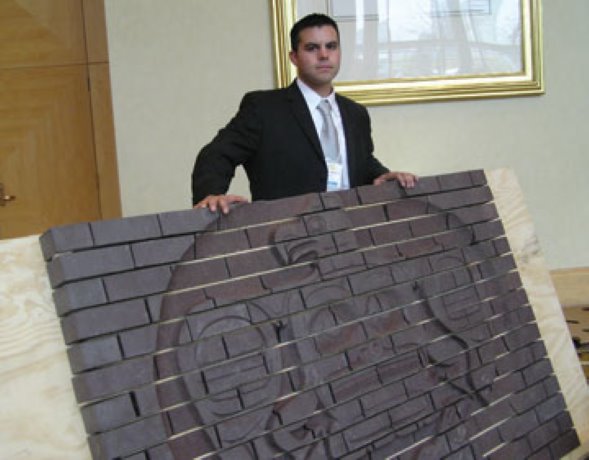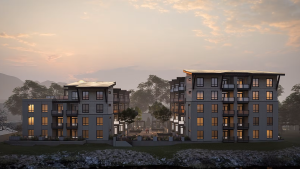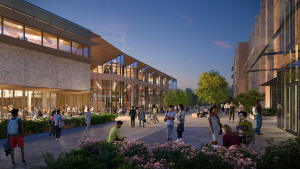Sumas First Nation of Abbotsford, B.C., noted for nearly a century of brick-making skills, is combining First Nation’s art with the art of brick-making. The results are unique murals that can be incorporated in building structures, adapted to corporate logos, or used as signage.
VANCOUVER
Sumas First Nation of Abbotsford, B.C., noted for nearly a century of brick-making skills, is combining First Nation’s art with the art of brick-making. The results are unique murals that can be incorporated in building structures, adapted to corporate logos, or used as signage.
“I carve the clay (brick) when it’s still wet,” said artist Ray Silver, chief operating officer of Se:math Industries, a new venture formed to revitalize Sumas Clay Products, edged out when large-scale producers, plus stone composites, eroded the Fraser Valley band’s market.
Specialty brick murals are only one of the niche construction markets that Se:math — started in June of this year — is literally carving out. The characteristics of the Sumas clay and the unique way it’s fired causes bricks to become rock hard.
“We tried putting some on a railway crossing and had heavy trucks run across them and they didn’t break,” said the artist’s grandfather, Ray Silver, 83, who began brick-making at age 15.
The product’s strength has allowed the band to sell a “tumbled” product produced in band-designed tumblers. While others break under the process, the band’s brick emerges with an aged look, but intact. The tumbled brick appeals to Japanese buyers who use the vintage-looking product for new construction around older sites. Food and beverage outlets also favour its ability to create a cellar-like appearance.
The strength of the material is derived from a large clay deposit on the side of Sumas Mountain — once a lake bottom — that is 350 feet deep in places.
It is the same deposit that First Nations people showed in 1911 to brickmaker Charles Maclure, who instantly recognized its potential.
He built a factory at the mountain’s base, which became the Kilburn plant of the Clayburn Company. The plant made a variety of bricks, pipes, flu liners and other products. The plant was sold to a clay pipe maker in 1940, but when plastic pipe came in, it shut down.
Sumas First Nations, in 1979, bought it and restarted brick-making. The plant supplied product to some of B.C.’s first SkyTrain Stations as well as product to many of the larger projects in large urban centres.
Twenty yeas later, the company’s sales had stalled. Large volume plants produced four million bricks a week, while the Sumas plant was limited to about 400,000.
The future looked bleak until Rahul Lakhote, armed with an MBA, and Ray Boyes, an Abbotsford resident involved in the community, heard of the plant’s problems — and potential. They joined forces with artist Silver and went to his grandfather with their ideas.
“We had a huge asset sitting there,” said Lakhote. There were generations of native brick-making knowledge, a rich clay deposit, kilns with a $27 million replacement value, plus the reputation of producing a good product.
Lakhote also realized the potential, especially for architects and design specialists, of using carved brick art pieces or corporate logos.
The younger Silver, chief executive officer Lakhote, and board chairman Boyes, drew up a business plan, which the band council approved.
Silver then walked into the plant and fired everyone. Time was needed to implement the strategy within the plant. Since summer, Se:math’s cash reserves have increased, sales orders are coming aided by media coverage, and 11 employees have been hired back.
But, more importantly, says Lakhote, the band and employees have signed onto the new vision that expresses not just brick-making but the cultural aspects of the Sumas First Nation.
“We are also selling direct,” said Lakhote, as a sign this summer brought many local buyers directly to its doorstep. That’s a strategy lending itself to LEED builders and developers concerned about reducing their carbon footprint.
“It is something we are looking at,” said Boyes.











Recent Comments
comments for this post are closed